The Art of Customer Recovery: Transforming Negatives into Positives written by John Jantsch read more at Duct Tape Marketing
The Duct Tape Marketing Podcast with John Janstch
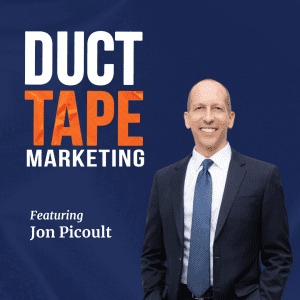
In this episode of The Duct Tape Marketing Podcast, we explore the art of customer recovery with Jon Picoult, a renowned customer experience expert, founder of Watermark Consulting and author of “From Impressed to Obsessed: 12 Principles for Turning Customers and Employees into Lifelong Fans.” Jon has worked with some of the world’s foremost brands, personally advising CEOs and other members of the C-Suite. He helps organizations capitalize on the power of loyalty, both in the marketplace and in the workplace.
Key Takeaway:
In the world of customer experience, mishaps are inevitable. However, by approaching customer recovery with style, empathy, and exceptional ownership, businesses can turn these situations into opportunities to create raving fans. Remember, a well-handled recovery can often leave a more positive impression on customers than a problem-free experience.
Questions I ask Jon Picoult:
- [01:01] How does somebody become a customer experience expert?
- [02:48] How do you unify decision-makers in an organization around a customer experience vision?
- [05:27] As the pandemic’s impact led to relaxed customer service, are we now entering an era where customers have heightened expectations?
- [06:56] What role do you see speed playing in today’s market?
- [09:06] Could you share a case where a company sought your assistance in transforming their customer experience?
- [13:13] Have you encountered instances where customers were willing to pay more for exceptional service?
- [15:10 What are the best strategies for fixing a poor customer experience?
- [17:56] How can someone begin to identify and address gaps in their customer experience?
- [19:52] What role will A.I. play in shaping the future of customer service and experience?
- [21:19] Where can our listeners connect with you and explore your work further?
More About Jon Picoult:
- Learn more about Jon’s book, FROM IMPRESSED TO OBSESSED: 12 Principles For Turning Customers And Employees Into Lifelong Fans.
- Learn more about Jon and his company.
- Watch Jon’s story about The Best Service Recovery… Ever!
- Connect with Jon on LinkedIn, X (formerly Twitter), and Instagram.
Get Your Free AI Prompts To Build A Marketing Strategy:
Like this show? Click on over and give us a review on iTunes, please!
Connect with John Jantsch on LinkedIn
This episode of the Duct Tape Marketing Podcast is brought to you by the DeskTeam360
![]() Desk team 360 is the #1, flat-rate, digital marketing integration team, that helps small businesses and marketing agencies with graphic, web design, and on-page marketing services.
Desk team 360 is the #1, flat-rate, digital marketing integration team, that helps small businesses and marketing agencies with graphic, web design, and on-page marketing services.
John Jantsch (00:08): Hello and welcome to another episode of the Duct Tape Marketing Podcast. This is John Jantsch, and my guest today is Jon Picoult. He helps companies impress their customers and inspire their employees creating raving fans that drive business growth. He’s the founder of Watermark Consulting and a noted authority on customer and employee experience. He’s a sought after business advisor and speaker working with some of the world’s foremost brands, personally, advising CEOs and other members of C-Suite. He’s also the author of a book called From Impressed to Obsessed 12 Principles for Turning Customers and Employees into Lifelong Fans. So we’re going to talk about customer experience today. So Jon, welcome to the show.
Jon Picoult (00:52): Hey, John, it’s good to be here with you.
John Jantsch (00:54): So I’m always curious on people’s origin stories for how they got into the particular line of work that they chose to focus on. So how does somebody become a customer experience expert?
Jon Picoult (01:05): Just lucky, I guess
John Jantsch (01:07): I should have said, how does somebody choose to as well now, not doubting it, I just mean I always love hearing what story backs somebody into what they’re doing now.
Jon Picoult (01:18): Yeah, so my first entree into business was selling radio ads back in college, door to door selling radio ads because the college station that I was trying to get a DJ job at, it was a commercial station. It didn’t get any funding from the university. And so they basically said, well, if you want anything other than the graveyard shift, you need to bring in some revenue for us. And so it was actually through that experience that I began to see how even very small details in your interactions with prospects or customers can have a really significant influence on their likelihood to purchase from you to repurchase from you. And so that was the first time I was kind of exposed to what I would now call customer experience, even though back then there really wasn’t the term for it. And then eventually when I went into the corporate arena, I had the opportunity to work leading various areas like sales, marketing, service ops, distribution even.
(02:13): And that really gave me a chance to see how the customer experience is delivered from the perspective of many different silos. And that’s a big challenge for many organizations is getting all of those functional leaders to really coalesce around one vision for the experience you’re trying to deliver. And so after that experience, I kind of thought to myself, well, this is a unique perspective to have having walked in the shoes of all those people, and I always wanted to set up my own consultancy. And that was the trigger for me was leveraging that expertise and those different perspectives to help other organizations improve the experiences they were delivering.
John Jantsch (02:48): So my next question was really going to be about challenges. You teed up a pretty big one that somebody can have an idea of, oh, we should be seen as this kind of company, but then at the end of the day, you’ve got this person executing, this person executing. So how do you help people work through that particular challenge?
Jon Picoult (03:08): Yeah, I think it comes to good leadership in the end. I mean, that might sound trite, but I have found that the common thread of any company that I’ve ever worked with that has been successful in its efforts to differentiate itself through customer experience, it really came down to the top executives, if not the CEO themselves, being passionate about that and making sure that it was something that was woven through every action that the company took. So how do you make sure that you are not trying to herd cats in terms of all of these functional silo leaders? And I think that it really comes, it’s the job of the chief executive to make sure that they are holding accountable, everyone in the organization for not just maximizing their own metrics and their own organizations success, if you will, but that they are cognizant of how they fit into the bigger picture and that they are standing up and raising their hand when they see that something that might be good for their organization is not good for some larger objective that the enterprise is seeking to achieve. And I think when you make heroes out of the people who step forward, raise their hand and say, Hey, I got an issue here, we need to recalibrate. I think that’s how you start to create a culture where people are not just strong silo leaders, but good corporate citizens.
John Jantsch (04:29): And I
Jon Picoult (04:30): Think that’s where you want to end up.
John Jantsch (04:31): Yeah, I mean, what I hear you saying is it’s really related to culture, isn’t it? Or permission to be that person to speak up, isn’t it?
Jon Picoult (04:41): Absolutely. Yeah. I think that the cultural norms that surround executives within an organization are going to shape their behaviors. And if you’ve got a culture that rewards people for hitting the metrics and the objectives for their particular silo, ignorant of how that may or may not actually hurt other parts of the business, that’s a problem. And conversely, when you create a culture where people are just by default thinking about the enterprise as a whole, I think that the sum ends up being greater than the parts.
John Jantsch (05:13): So we went through one of these days, I’m going to get through a show without blaming the pandemic on something that’s changed in business. But I think we went through a period in the pandemic where people were very forgiving. It’s like, I know you can’t get people, oh, supply chain, I get it. I mean, it was like customer experience kind of went by the wayside in a way out of necessity maybe. And then I think some companies relied on it a little too long, and I feel like we’ve almost got this backlash now where it’s like, no, that passes over. I actually, things have changed to the point where I actually expect more.
Jon Picoult (05:47): I think you’re absolutely right. I think there was this period of forgiveness among both B two B and B two C consumers. But I think we are long past that. And I think that if anything, that there is an aggravation among customer populations when they see a company that is trying to attribute its experiential weaknesses
John Jantsch (06:11): To
Jon Picoult (06:12): The pandemic at this point, what four years in. And I think there’s very little tolerance for that. And I think that you’re seeing the companies that are succeeding and thriving following the pandemic are the ones that didn’t cut to the bone during that downturn and were able to bounce back strongly and continued their focus on the quality of the experience they were delivering.
John Jantsch (06:34): Right. There’s been a lot of talk lately. In fact, I don’t know if you’re familiar with Jay Bearer was on this show recently talking about speed being maybe number one in terms of customer experience for a lot of industries. What role do you see that? I want it fast. I want the response to be quick. I want the solution to be quick or the resolution to be quick. What role do you see speed playing in today’s market?
Jon Picoult (07:01): I absolutely agree that for many businesses, speed is a key driver to customer success. And I don’t want to say customer satisfaction because satisfaction in my view is setting the bar too low. It is a way to delight people when you are super responsive. And the reason that I would say that’s the case is because number one, it’s rare that people see that these days. So when it happens, it creates what I refer to as a peak in the experience that people remember kind of snaps their head around and they’re like, Hmm, that’s unusual. I don’t normally see that. The other thing that quick responsiveness does is it actually reduces the amount of effort that your customers need to invest in order to accomplish something with your business. Because if you’re not super responsive, it really saddles me as the customer with more effort because what do I need to do? I need to reach out and follow up with you or follow up with a colleague or maybe another potential business or supplier that can help me more quickly. So I would say yes, speed is important. What I want to be clear though is it’s not always the key driver, and it really depends on the nature of your business and what you want to be famous for. So for example, there are some luxury,
John Jantsch (08:12): The fastest brain surgeon on the planet is probably not what you want.
Jon Picoult (08:16): Example. Yeah. Wasn’t the example I was thinking of, but yeah, that’s a good one too. But I’m thinking about some luxury products like Hermes for example. There are luxury high-end providers where the fact that you actually have to wait potentially many weeks for the product to come in and be delivered to you maybe to be handcrafted for you, that is actually a strengthening element of their brand experience. And so their speed is not a plus. So that’s the one caveat that I would say to your listeners is you got to really know what you want to be famous for as a company. And speed in that case might play into the value proposition, but in other cases it might detract from it.
John Jantsch (08:57): Yeah, absolutely. So let’s use an example. A lot of people use the term raving fans. You use it as part of your unique positioning for your organizations. Do you have an example that you can think of a company that brought you in and ask for, Hey, we need to transform our experience and maybe talk about some of the things that they did or you did or how they turned it around?
Jon Picoult (09:19): So one example that comes to mind, and the reason I like this example is because when many people approach customer experience improvement, they think about fixing pain points. They think about, let me look for stuff that’s broken and then figure out how I can remedy that. And that’s obviously an important component. But what I always like to tell people is that the customer experience game isn’t just about find and fix, it’s about discover and delight.
John Jantsch (09:48): And
Jon Picoult (09:48): What I mean by that is it’s about understanding things that your customers need or want that they never thought to ask you for because they never imagined that you could possibly help them. And so the example that I have actually is from a medical technology company that my firm worked with one of the largest companies in its industry. And essentially what they do is they provide automation products for laboratories. So for example, when you go to a local lab or a hospital and you have a blood drawn or something, it’s their systems that are automating the processing of those samples. And so here’s the thing, they have this great newfangled technology that completely automates the entire hospital laboratory. Well, that’s great, super exciting. But what they never realized was that one of the biggest challenges for their customers was actually the change management that was involved for the people working in the lab
John Jantsch (10:44): Because
Jon Picoult (10:45): The people working in the lab, these lab technicians, they had done it the same old way for decades, and then suddenly there’s this newfangled technology coming and they have to completely relearn how to do their jobs. And as you can imagine, there was a lot of friction and hesitation and concern there. And so in working with this, that was an opportunity. There was an opportunity for my client to actually provide their clients a turnkey program to help manage the change in their laboratories. And when they started to offer that, it was like they made the lab leaders at these hospitals heroes in the eyes of their employees because now it wasn’t just like, oh yeah, we got this new technology deal with it. There was a whole structured program for them to take their staff through and navigate them through that change. And that’s something that I would say was the kind of thing that creates raving fans within your employee ranks, which as you know from my book, I consider a type of customer and it comes down to delivering something that nobody really asked for.
John Jantsch (11:47): But
Jon Picoult (11:47): When you look and listen carefully, you see, you know what? There’s an opportunity there to do something different.
John Jantsch (11:52): And that’s a perfectly case of what can be seen as a customer experience touchpoint as actually being a core differentiator from a marketing standpoint. Yeah,
Jon Picoult (12:01): That’s right. And to this day, they actually do market that.
John Jantsch (12:04): Hey, have you ever tried to hire freelancers and found that the quality of work was lacking? Or you got all the outsourcing excuses as to why the work didn’t get done on time? Well, DeskTeam360 has revolutionized the outsourcing game with their insourcing program that eliminates all those frustrations and excuses. You get unlimited graphic designs, website funnels, CRM, email automation integrations, automations, really anything that requires you to log into software. Imagine all the time and frustrations you can save from trying to get your tech work done properly. We use DeskTeam360 every day in our business, and so I’ve negotiated you a 10% deal. That’s right. Just go to a Deskteam360.info, book a discovery call, and you’ll receive the special duct tape marketing 10% off because hey, your pal John always takes care of you. So that’s it. Go to Deskteam360.info and book your call today. So talk a little bit about, there are a whole boatload of surveys, research that suggests people are willing to pay more for a better experience. What have you seen in terms of that price being down the list because the experience was up here that people were willing to pay more?
Jon Picoult (13:22): Yeah, it’s absolutely true. It is not a myth. It bears out, as you say, in study after study. And the bottom line is that happy, loyal customers are less price sensitive because they don’t focus on the cost of a particular transaction, but rather they look at the value of the entire relationship that they have with you. And so when they’re less price sensitive, you can absolutely derive greater revenue from them, not only in terms of adjusting your price, but they’re also more likely to entertain ideas for other products and services from you. They’re more likely to refer others to you. So there’s a whole bunch of goodness there, but absolutely price. I’m not going to say they’ll pay any price no matter how good the experience, but you absolutely have more latitude. And the research that I’ve done that is described in the book actually looked at the shareholder returns of companies that excel in customer experience. And I mean, the contrast is quite stark. The companies that lead in customer experience outperform that those lag by an over three to one ratio. And one of the key reasons they’re able to do that is because they get a loyalty lift from their revenues and that just increases their profitability.
John Jantsch (14:31): Well, I think you said one of the key words value, I mean, convenience has value, for example. So I think obviously all those things go into the equation of analyzing whether a price is worth it or not. I had you share an example of creating raving fans in a positive environment of doing something proactively every now and then somebody screws up. And a customer experience is not what they meant it to be. Somebody has a bad experience. Do you have any advice for somebody to think of as a point of view or, I don’t think it’s a set tactic because it applies differently across the board, but how do you save or a bad experience? I mean, how should you approach saving a bad experience?
Jon Picoult (15:13): And so I love the question. This is very dear to my heart. It’s one of the key principles I talk about in the book, the notion of recovering with style. And the key thing for people to understand when they’re faced with a failure in the experience is that you should not resign yourself to creating a dissatisfied customer or even just a neutral customer. Because what great companies recognize, all the legends out there, the legendary brands, they sometimes screw up. But what makes them different is that they recognize that doesn’t have to, it doesn’t necessitate creating that dissatisfied customer and that if you overcorrect on the recovery, you can actually create a peak in the experience that’s going to eclipse the negativity of the failure
John Jantsch (15:56): Itself.
Jon Picoult (15:57): And this has been researched so much that there’s actually a term for it. It’s called the service paradox, and it refers to this idea that you could create a more loyal customer after the failure if you’re recovering in style as compared to before the failure even occurred. And so my suggestions for folks is first, that’s the number one rule, is you got to approach it. If there’s a failure, you say, this isn’t just about fixing, this is about fixing. And then figuring out how can I create that peak that people are now going to remember? And I think the way to accomplish that is, number one, it’s very easy to immediately focus on solving the problem, but the first thing many customers want is just to feel seen and heard. And so simply empathizing with them and acknowledging the issue and the impact that it had on them, that can go a long way. Once you do that, then the second key thing is to take exceptional ownership. What really aggravates people at a point of failure is when you have somebody that says, that’s not my department. I can’t really solve that. I’ve got to pass you off to this other area. When somebody just says, I can help you with that, just those words immediately, the tenor of the conversation changes. And if you back that ownership up with great execution, that’s going to serve you well in terms of recovering with style
John Jantsch (17:11): And going all the way back to one of our original points is, I mean, that’s a culture, right? I mean, that’s like I give you permission to own that and solve that. And even if it’s not in your job description, I give you permission to solve that rather. That’s
Jon Picoult (17:25): Right. Yeah. I call it Velcro ownership, and I encourage any company I work with to embrace Velcro ownership, where you imagine everybody comes to work, they’re dressed in a Velcro suit every day, every complaint, every need, every request is like a Velcro ball that’s thrown at ’em. And what happens when it hits your Velcro suit, it sticks, it hits your desk, it is yours. You might get other people involved to help resolve the issue, but you’re always keeping a on it, and the customer sees that it’s you advocating for them and owning the resolution of their issue.
John Jantsch (17:54): So if somebody’s listening to this and they’re thinking, yeah, I know we’ve got some holes. I don’t know where they are, but I just feel it. What’s the process? I mean, is it an audit you take a look at? I mean, how does somebody get started?
Jon Picoult (18:07): I think there are a number of ways to get started. I’ll suggest too to your listeners. The first is become a customer yourself. Whatever business that you’re in, sit down, take off your business hat, pretend that you don’t know anything, and try to sign up for that service. Try to go buy that product. Try to go learn about that offering that you’ve got, because inevitably, when you go through the experience yourself, you will come across things where you’ll be like, whoa, I didn’t know that it was like that. And it’s going to give you a whole host of ideas of how to improve it. So that would be my first suggestion. The second is, and this would be a compliment, is go out to your staff and simply ask them, say to them, what are the top three things that annoy or frustrate our customers?
(18:52): Tell me about those. And the neat thing about that, John, is the mere act of asking your staff and listing them in that process, as long as you act on their ideas, not only is it going to help improve the customer experience, it actually helps improve the employee experience. Because what your employees then see, they’re not just gears in the machine, cogs in the wheel. You are engaging them as a trusted partner to really help elevate the quality of the experience by capitalizing on the intelligence that they bring to bear. And so that serves to elevate the experience of both parties, the customer and the employee alike.
John Jantsch (19:27): And I wonder how many employees hate their job because they’re the brunt of bad customer experience processes, right?
Jon Picoult (19:34): Yeah. Well, and that’s why it’s a vicious cycle. A bad customer experience leads to a bad employee experience, which in turn leads to more bad customer experiences. But it works the other way too. If you can get that flywheel going in a positive way, you’re unstoppable.
John Jantsch (19:50): Alright. We’ve waited really till almost the last minute of the show for me to ask you, what’s the role of AI in customer service, customer experience, good, bad, ugly?
Jon Picoult (19:59): I’m not going to purport to know the answer to this because it’s obviously a rapidly evolving technology.
John Jantsch (20:05): But
Jon Picoult (20:05): Here’s what I would say is in the short term, I believe the greatest benefit of it, and that is giving your people a copilot that can guide them, coach them, help them navigate what, in many organizations can just be a mass of information that people have to sift through in order to find something that the customer’s looking for. How do I solve this problem? How do I answer this question? I think that ai, by being with the large language models, to be able to sift through that information very efficiently, it can provide a very effective copilot to your staff. So they could quickly zero in on the answer. And what that allows them to do is to focus not so much on the transaction of getting the information. It allows them to focus on the interaction with the customer because it becomes so easy for them to get the answer that they can then focus on the softer aspects of the interaction that make it feel warm and inviting to that customer.
John Jantsch (20:58): Yeah, I saw a demo of a product, some of these developing where it actually listens. And so it’s providing the answers before in real time. In real time. It’s like, this person’s asking about this, oh, here are a couple of scenarios. So yeah, obviously that makes it a lot easier to get people very effective in their jobs very quickly.
Jon Picoult (21:19): Absolutely.
John Jantsch (21:19): Well, John, I want to appreciate, or I do appreciate you some by the Duct Tape Marketing Podcast. You want to invite people to where they might connect with you and learn more about your work and anywhere you want to send them.
Jon Picoult (21:29): Yeah, sure. The best way to learn about my work is to go to my website, which is jonpicoult.com. That’s J-O-N-P-I-C-O-U-L-t.com. And from there you can learn about my book, my speaking services, and my consulting firm.
John Jantsch (21:43): Yeah. Awesome. Well, again, I appreciate you taking a moment, and hopefully we’ll run into you one of these days out there on the road. Did you know that with HelloFresh, you get Farm Fresh, pre-portioned ingredients and seasonal recipes delivered right to your doorstep, skip trips to the grocery store and count on HelloFresh to make home cooking easy, fun, and affordable. That’s why it’s America’s number one meal kit. They have so many in season ingredients. I mean, you’ll taste the freshness of fall, all those fall vegetables that are really right on your doorstep straight from the farmer’s field to your table, I think it’s pretty easy to see that HelloFresh takes a hassle out of mealtime. But did you know it could also be less expensive than going to the grocery store and way less expensive than take out fast food junk? My wife and I really love the fact that we can order vegetarian meals. We’re vegetarians, and they have us covered with a wide array of options. So go to hellofresh.com/50duct, that’s five zero DUCT, and use that code 50duct for a 50% off, plus free shipping. That’s right. Go to hellofresh.com/50duct and you’re going to get 50% off your first order plus some free shipping. Check it out. I.
Sign up to receive email updates
Enter your name and email address below and I’ll send you periodic updates about the podcast.
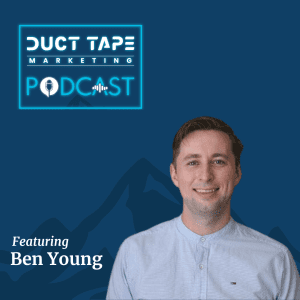 In this episode of the
In this episode of the 
 In this episode of the
In this episode of the 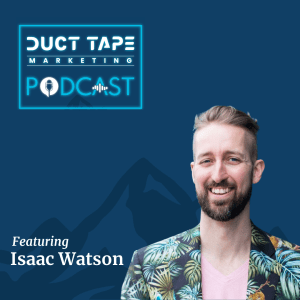 In this episode of the
In this episode of the  In this episode of the
In this episode of the 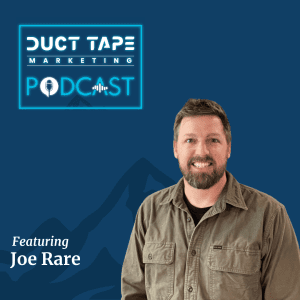 In this episode of the
In this episode of the 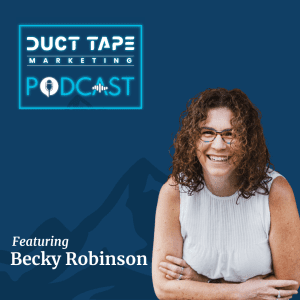 In this episode of the
In this episode of the  In this episode of the
In this episode of the 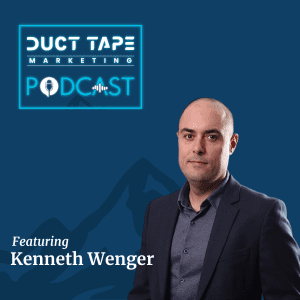 In this episode of the
In this episode of the